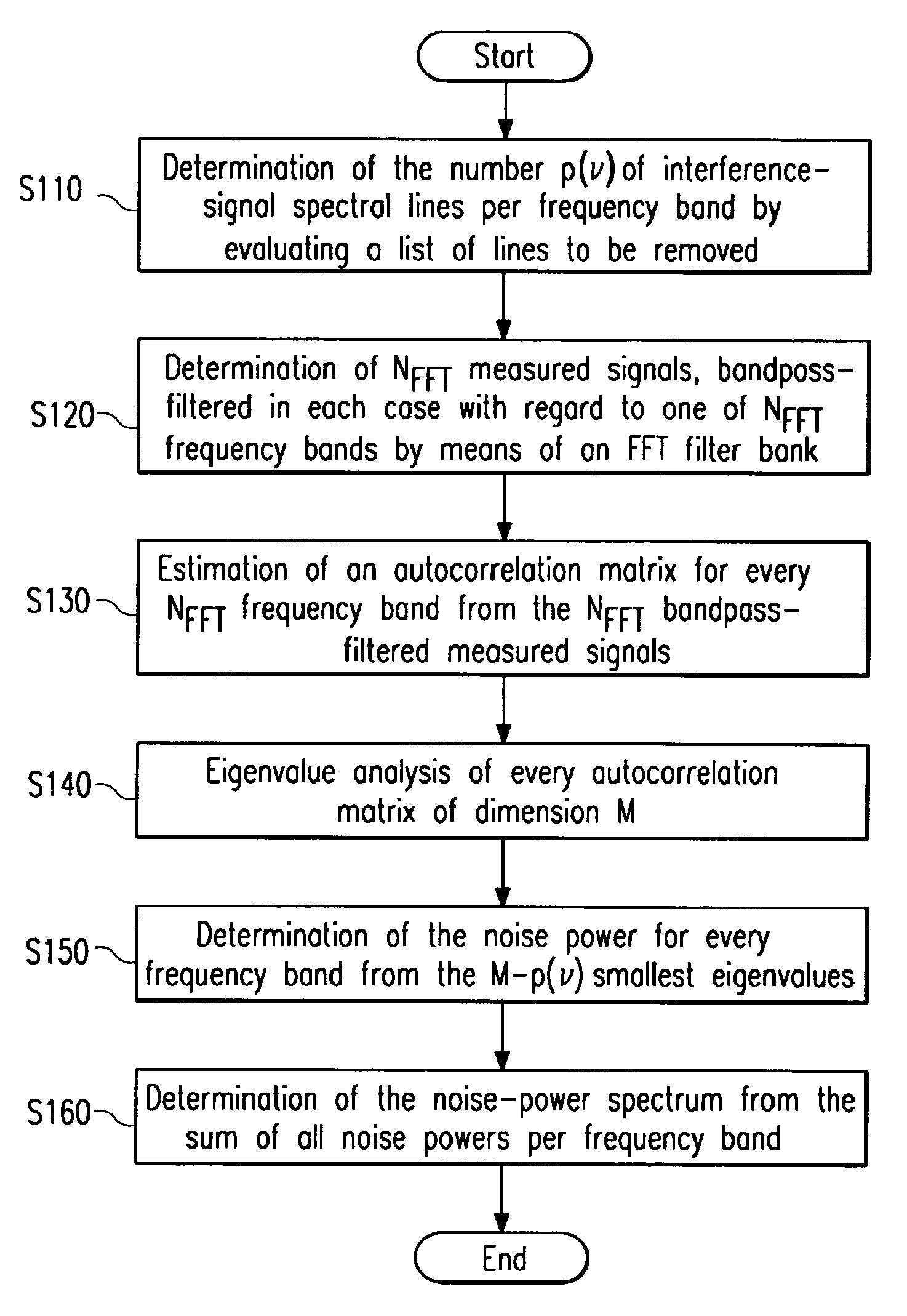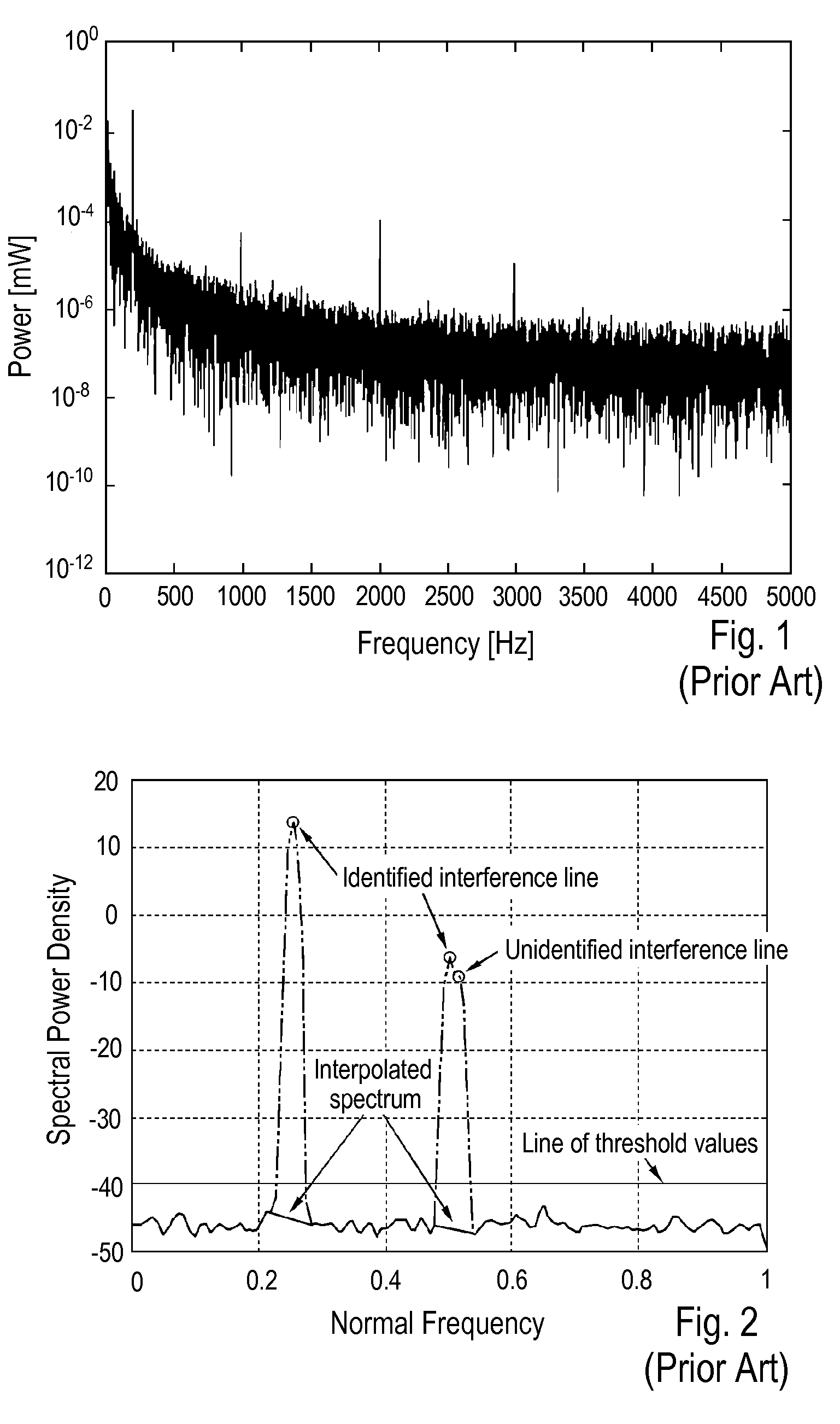Method and system for the detection and/or removal of sinusoidal interference signals in a noise signal
a sinusoidal interference and noise signal technology, applied in the field of methods and systems for the detection and/or removal of sinusoidal interference signals in noise signals, can solve the problems of monotonous descending course, disturbing spectral lines of sinusoidal interference signals, and inability to use constant threshold values
- Summary
- Abstract
- Description
- Claims
- Application Information
AI Technical Summary
Benefits of technology
Problems solved by technology
Method used
Image
Examples
Embodiment Construction
[0040]Before describing the system according to the invention and the method according to the invention for the detection of sinusoidal interference signals in a noise signal and the system according to the invention and the method according to the invention for the removal of sinusoidal interference signals from a noise signal in greater detail with reference to FIGS. 9, 10, 11, 12, 13, and 14, the following section presents the theoretical background, on which the invention is based.
[0041]According to the invention, the entire frequency range of the measured signal comprising the noise signal and sinusoidal interference signals is split into several frequency bands, in which the respective noise signal is approximately white and which each contain only a limited, comparatively small number of sinusoidal interference signals. The subdivision into several frequency bands takes place via a filter bank, which is realised in the form of a Fast Fourier Transform (FFT) according to FIG. ...
PUM
 Login to View More
Login to View More Abstract
Description
Claims
Application Information
 Login to View More
Login to View More - R&D
- Intellectual Property
- Life Sciences
- Materials
- Tech Scout
- Unparalleled Data Quality
- Higher Quality Content
- 60% Fewer Hallucinations
Browse by: Latest US Patents, China's latest patents, Technical Efficacy Thesaurus, Application Domain, Technology Topic, Popular Technical Reports.
© 2025 PatSnap. All rights reserved.Legal|Privacy policy|Modern Slavery Act Transparency Statement|Sitemap|About US| Contact US: help@patsnap.com



